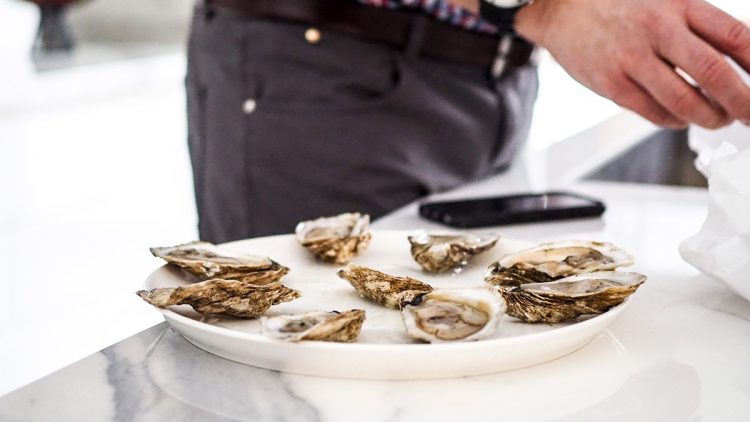Oysters are wonderful bites (or slurps!) of buttery, salty, briny bits and ones that are synonymous with decadence. But, even the most avid bivalve lover may sometimes be at a loss when it comes to picking out oysters at a restaurant or to bring home for an upscale night in.
For starters, explains Sims McCormick, co-founder of Real Oyster Cult, there are five types of oysters. McCormick says that sampling oysters from each region can help narrow down your preference for flavor.
- The Pacific: Most of the oysters worldwide fall into this category: France, Ireland, England, Australia, New Zealand, and the West Coast of North America all grow the Pacific oyster, as does its native Japan. It typically has a very pretty shell, plump meats, and the flavor is laced with cucumber and sometimes melon. The undertones are mineral based, and not particularly salty.
- Kumamoto: These oysters originate from Japan and are farmed on the West Coast. A favorite of newbies and connoisseurs alike: It’s buttery, plump, infused with melon, and has a mellow brine.
- Olympia: Named for Olympia, Washington in the Puget Sound area, this oyster is very tiny but has a big personality: An earthy, nutty, metallic flavor.
- European Flat: Also known as a Belon, this is the native oyster of Europe but is also wild harvested in Maine. It is intensely metallic and bold (like pennies in a stream); not for the faint of heart. But people who love them, love them.
- Eastern Oyster: Grown on the East Coast from Northern PEI down to Texas, it has the most briny, classic sea salt flavor of all the varieties.
The growing region, she says, has the most impact on flavor. Once you understand which flavor profiles come out of which growing region, this can can act as a guide to picking oysters when the menu — or seafood aisle — is full of names you may not recognize.
“Oysters are like wine — they take on the attributes of the water in which they’re grown. We encourage exploration: You’ll quickly learn whether you prefer an East or West Coast flavor profile or both. If you know their general characteristics, you can make an educated guess based on their region,” she says.
And, says McCormick, once the regions and their correlating flavors are nailed down, it helps with another step — choosing the booze. While many automatically pair oysters with Champagne or other types of bubbles, they can stand up to beers and cocktails, too. The key to pairing? Being aware of which region your oysters are from and queuing up beverages that complement their flavor profiles.
“There are some flavors which naturally compliment different regions more. With a fruity west coast oyster, I would recommend a dry white, like a Muscadet (which pairs beautifully with just about any oyster). A briny eastern bivalve is delicious with a cold brew, a dry martini, or a margarita on the rocks. Bubbly also pairs perfectly with most oysters,” she says.
McCormick also notes that summer isn’t the only season in which oysters can and should be enjoyed. While it’s true that many oysters naturally spawn in the summer, farmed oysters usually have a peak season which can range throughout the year.
Bringing oysters home and unsure how to prepare them? Check out this guide for everything you need to know for cleaning, shucking and serving oysters.

